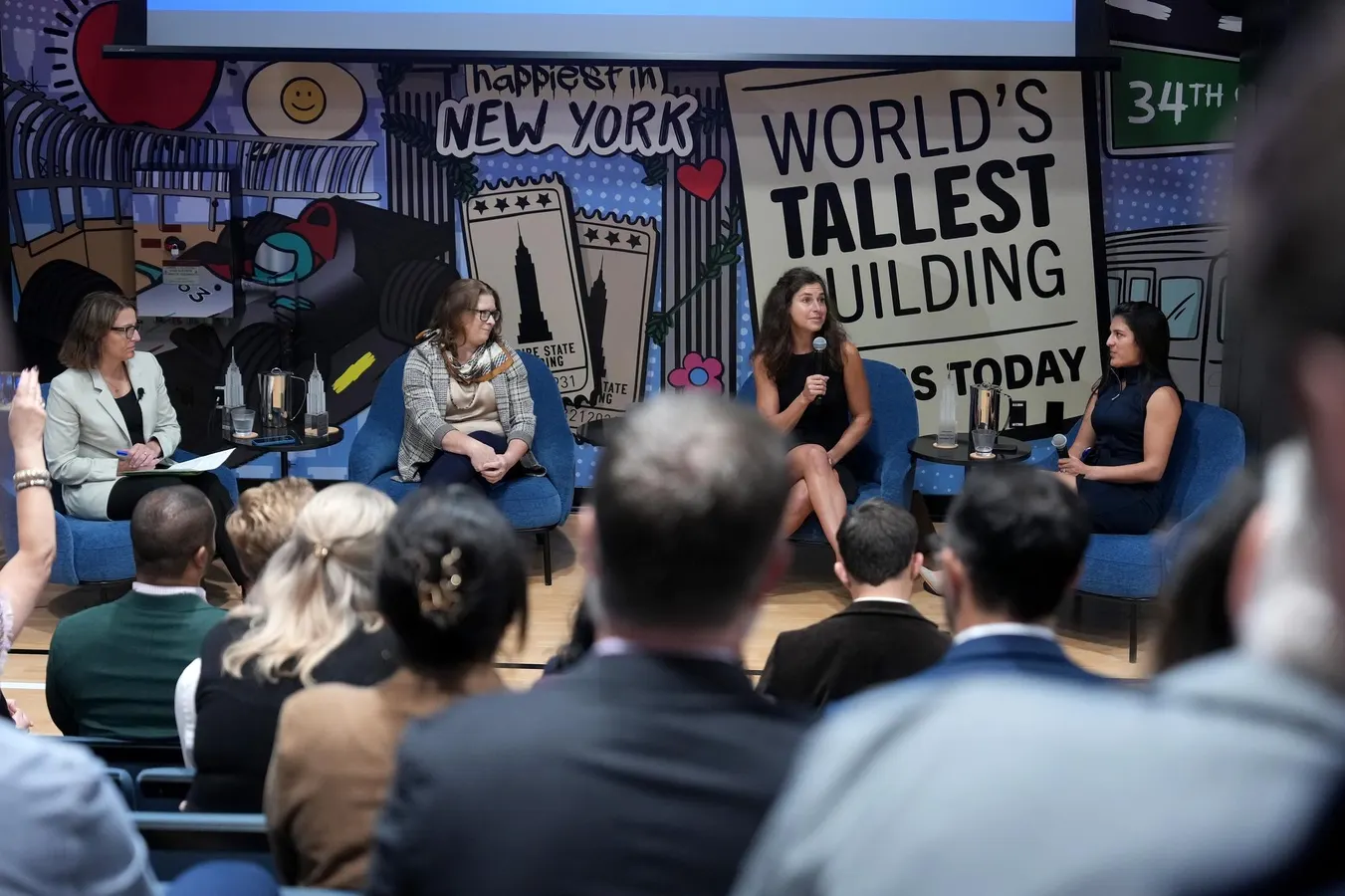By John Nacion,Monica Sanders,Senior Contributor
Copyright forbes

NEW YORK, NEW YORK – SEPTEMBER 25: (L-R) Doreen Harris, Myrrh Caplan, Dana Robbins Schneider, and Cristal Ortiz speak onstage during Climate Week at The Empire State Building on September 25, 2025 in New York City. (Photo by John Nacion/Getty Images for Empire State Realty Trust)
Getty Images for Empire State Realty Trust
At this year’s New York Climate Week, two themes emerged with clarity: young leaders are reshaping the climate movement, and material innovation is redefining what a sustainable economy looks like. These threads came together across the UN Youth Action Summit, Six Seconds’ Climate of Emotions: Youth Led Resilience Activation, The Global Fashion Agenda’s release of its sustainability blueprint for CEO’s and the Swarovski Foundation’s Future Materials: Creative Solutions for a Sustainable World event. Together, they illustrate that the future of climate action will be intergenerational, cross-sector, and built on both justice and technology.
Youth Leadership At New York Climate Week
The United Nations Youth Action Summit convened climate activists, student leaders, and young professionals who are pressing governments and companies to deliver more than promises. They are asking for jobs, training, and a real seat at the decision-making table. For many, climate is not an abstract policy issue but a lived reality that affects housing, health, and opportunity.
Their demands align with broader workforce trends. Federal investments like the Climate Corps and the Inflation Reduction Act were meant to build pipelines into clean energy, data science, and resilience roles. Now that those measures have been eliminated, young leaders are focused on mitigating climate anxiety. This was on clear display at Climate of Emotions: Youth Led Resilience Activation. While helping one another advocate, the advocacy was a call for something deeper: systems that prepare them not just for entry-level work but for meaningful careers that support the long-term resilience of the planet and their well-being.
As one Global Fashion Agenda (GFA) statement put it, the urgency is clear: “Scientists now warn that we have just three years left to alter the trajectory of global warming before we risk triggering catastrophic tipping points.” The generation stepping forward at the Summit knows they will inherit the consequences of delay.
Council of Fashion Designers held an event about sustainable materials and innovation at New York Climate Week
Monica Sanders, CFDA
MORE FOR YOU
Future Materials And Industry Transformation
Both the GFA and the Council of Fashion Designers of America focused on materials innovation and industry transformation. Leading those conversations were also the next generation of designers and industry startups. It’s Future Materials: Creative Solutions for a Sustainable World, convened designers, scientists, and innovators working at the frontier of sustainable materials.
Guests were invited to explore the Innovation Gallery after the discussion, engaging directly with new fabrics, prototypes, and scalable solutions. This blending of art, science, and entrepreneurship underscored that sustainability is not just about materials but about culture, creativity, and opportunity. Federica Marchionni, CEO of the Global Fashion Agenda, emphasized the systemic nature of the challenge: “You cannot do one without the other. Recycling and circularity must go together with upskilling and reskilling people, so we don’t solve one issue while creating another.”
She pointed out that the heart of the problem lies not only in waste but in production itself: “The main point is to reduce emissions, and the bigger part of emissions comes from raw production. That means tackling how we produce, not just how we recycle at the end of a product’s life.”
The Fashion CEO Agenda 2025 makes the case that “by 2030, all priority materials must be both preferred and low climate impact, including cotton from regenerative farming, polyester from textile-to-textile recycling, and man-made cellulosics from next-generation sources.”
Youth And Innovation: Intersecting Forces
What connects youth climate leadership with sustainable materials innovation is a shared urgency to move beyond incremental change. Young leaders are demanding structural reforms that tie climate to equity, health, and livelihoods. Material innovators are proving that industries can pivot toward sustainability without waiting for new treaties or regulations. “Progress hinges on innovation – advanced technologies, circular business models like resale, repair, and rental, and nature-inspired solutions reshaping how fashion is designed, consumed and used,” noted the Fashion CEO Agenda 2025.
Marchionni also looked ahead: “The Fashion CEO of 2030 will lead a sector where circularity is in double digits, innovation drives growth without polluting the planet, and leaders help restore nature while ensuring society wins in the just transition.”
The human dimension is just as important. As another statement from the Agenda put it: “It takes bold, courageous leadership to champion sustainability in the face of complexity, resistance and short-term pressures. These defiant leaders inspire others to follow and can shape the industry’s future.”
Climate Week Lessons For The Future
Climate leadership is no longer top-down. It is distributed across generations, communities, and industries. At Climate Week, we saw that clearly: the energy of youth leaders insisting on equity, and the ingenuity of innovators rethinking how materials are made and used. Both groups are shaping the narrative, showing that climate action is about more than reducing emissions. It is about redesigning systems in ways that build resilience and opportunity.
The challenge now is scale. Youth voices must not only be heard but integrated into policy. Material innovations must move from pilot projects to mainstream supply chains. That requires investment, partnerships, and a willingness to move beyond incremental steps. As Climate Week concludes, the lesson is simple: the future of climate action rests in the hands of those ready to push boundaries. Youth leadership and material innovation are not side conversations. These are all central to how we will navigate the next decade, and industry is taking notice.
Editorial StandardsReprints & Permissions



